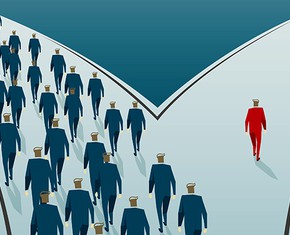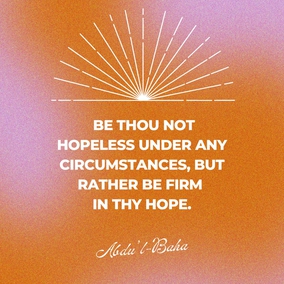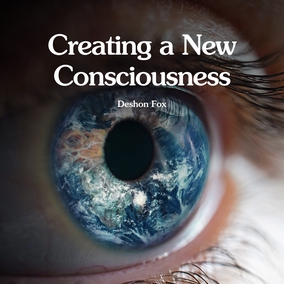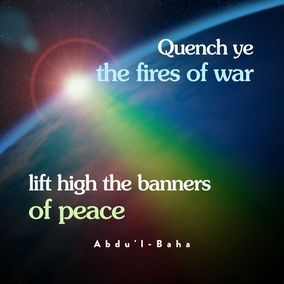The views expressed in our content reflect individual perspectives and do not represent the authoritative views of the Baha'i Faith.
In the past, religions typically began in a single, limited geographical location and slowly spread outward — but the advent of the Baha’i Faith, along with modern travel, completely changed that equation.
Baha’u’llah, the prophet and founder of the Baha’i Faith, suffered through multiple exiles and imprisonments for most of his adult life. Punished just for teaching his new Faith, he was tortured, jailed, and banished from one place to another in exceedingly cruel conditions. The way Baha’u’llah was forced to travel during those forced exiles — on foot, by horseback, and once, for a short distance, in a wooden boat — exemplified the ways people had traditionally moved from place to place for centuries.
RELATED: What’s the Main Goal of the World’s Baha’is?
When Baha’u’llah passed away in 1892 and named his son Abdu’l-Baha as his successor, the world had already started to undergo a set of revolutionary changes in the way human beings live, including rapid advances in our means of transportation. Abdu’l-Baha, when he was released from an Ottoman prison in 1908, took full advantage of those emerging modes of travel, taking the new Baha’i message from the Holy Land to North America, to northern Africa, and to Europe by ship, rail, and horseless carriages — those new inventions we now call cars.
These far-flung journeys taken by the exemplar of the Baha’i Faith made history.
Abdu’l-Baha’s travels, which spread the Baha’i teachings far and wide, impelled the process of the rapid expansion of the Baha’i Faith around the entire planet. However, historically unprecedented global growth did not hinge on modern modes of travel — it depended on and still depends on the divine origins of the Baha’i teachings. In one of his talks in North America, Abdu’l-Baha explained:
… at the beginning the Cause of Baha’u’llah was almost unknown, but on account of being a divine Movement it grew and developed with irresistible spiritual power until in this day, wherever you travel — East or West — and in whatever country you journey, you will meet Baha’i assemblies and institutions. This is an evidence that the Baha’is are spreading the blessings of unity and progressive development throughout the world under the direction of divine guidance and purpose …
Today, the Baha’i Faith — humanity’s youngest global belief system, at less than 200 years old — has become our planet’s second most widespread religion. That rapid growth occurred largely because of Abdu’l-Baha’s adventuresome journeys. As a result, Baha’is exist everywhere: in almost all nations, from all of the world’s cultures, representing every racial and linguistic group, from every social and economic class, and from every former faith.
That remarkable, unprecedented expansion, tremendously accelerated by Abdu’l-Baha’s world travels, has now become the subject of extensive study by a number of scholars and authors. The latest volume to explore Abdu’l-Baha’s journeys — titled Abdu’l-Baha in Europe 1912-1913 — was initially written by one of his traveling companions, a Persian Baha’i named Mirza Mahmud Zarqani, who accompanied Abdu’l-Baha in his sojourns to the global West.
The resulting memoir and travelogue, called Mahmud’s Diary when it was initially published, was originally written in Persian and published in two volumes — the first covering Abdu’l-Baha’s travels to the United States and Canada in 1912, and the second a chronicle of his travels to Europe and Egypt in North Africa during 1912-1913.
Recently, British Baha’i publisher George Ronald issued the first English translation of that second volume, translated and impressively researched and annotated by the Baha’i writer and scholar Adib Masumian. BahaiTeachings.org asked Adib about the book and what he learned about Abdu’l-Baha in the process:
David Langness: What compelled you to take on this project?
Adib Masumian: The two biggest motivators were the unique nature of the book itself and the fact that it had not yet been translated into English. It is an authentic, gripping, and reliable portrayal of the perfect Baha’i exemplar, Abdu’l-Baha, in action. The fact that such a book is a firsthand account is enough to endow it with immense value, but on top of that, it is filled with details about this particular journey in Europe that can’t be found in other sources. As far as I’m concerned, all this is much more than enough to put it near the very top of the list of Baha’i literature that should be made widely available.
David: How long did it take you?
Adib: The whole project took me close to seven years. Roughly the first half of that was spent actually translating the chronicle, during which time my mother, Farnaz Masumian, carefully checked every word of my translation against the original text, patiently sitting at my side as she reviewed my work in small installments of about one to two pages. In the remaining few years, I did the research that went into the book’s footnotes and endnotes; revised some of my translations of Abdu’l-Baha’s words after receiving very helpful feedback from the Research Department of the Universal House of Justice; and worked with the team at George Ronald, who published the book, to get the manuscript ready for print.
RELATED: How Do Baha’is Plan to Change the World?
David: When you did the extensive research required for a book of this length and complexity, which portions gave you the most inspiration?
Adib: So many portions of the book inspired me that it’s very hard to choose just a few. The numerous and peerless utterances of Abdu’l-Baha that are quoted in the book and deal with all kinds of subjects were certainly a wellspring of inspiration. I was deeply struck by all the eminent people who showed him an astonishing degree of reverence. It’s mentioned at one point in this volume that, after Abdu’l-Baha gave a talk at the Clifton Guest House in England, every member of the audience came up to him and knelt before his chair as they clung to the hem of his robe and implored his grace and blessings. A Persian nobleman was moved to tears as he watched this display of immense reverence even though he wasn’t a Baha’i, and the chronicler, Mahmud Zarqani, said that seeing this sight made him shed his own tears of joy. Can you imagine what it would have been like to witness that glorious scene? The mere thought of it has been enough to fuel me well beyond the end of that particular project; I still think of it now and often find myself shaking my head in disbelief whenever I do.
You May Also Like
Comments


















which happened in 1844 exactly as all Divine Prophecies